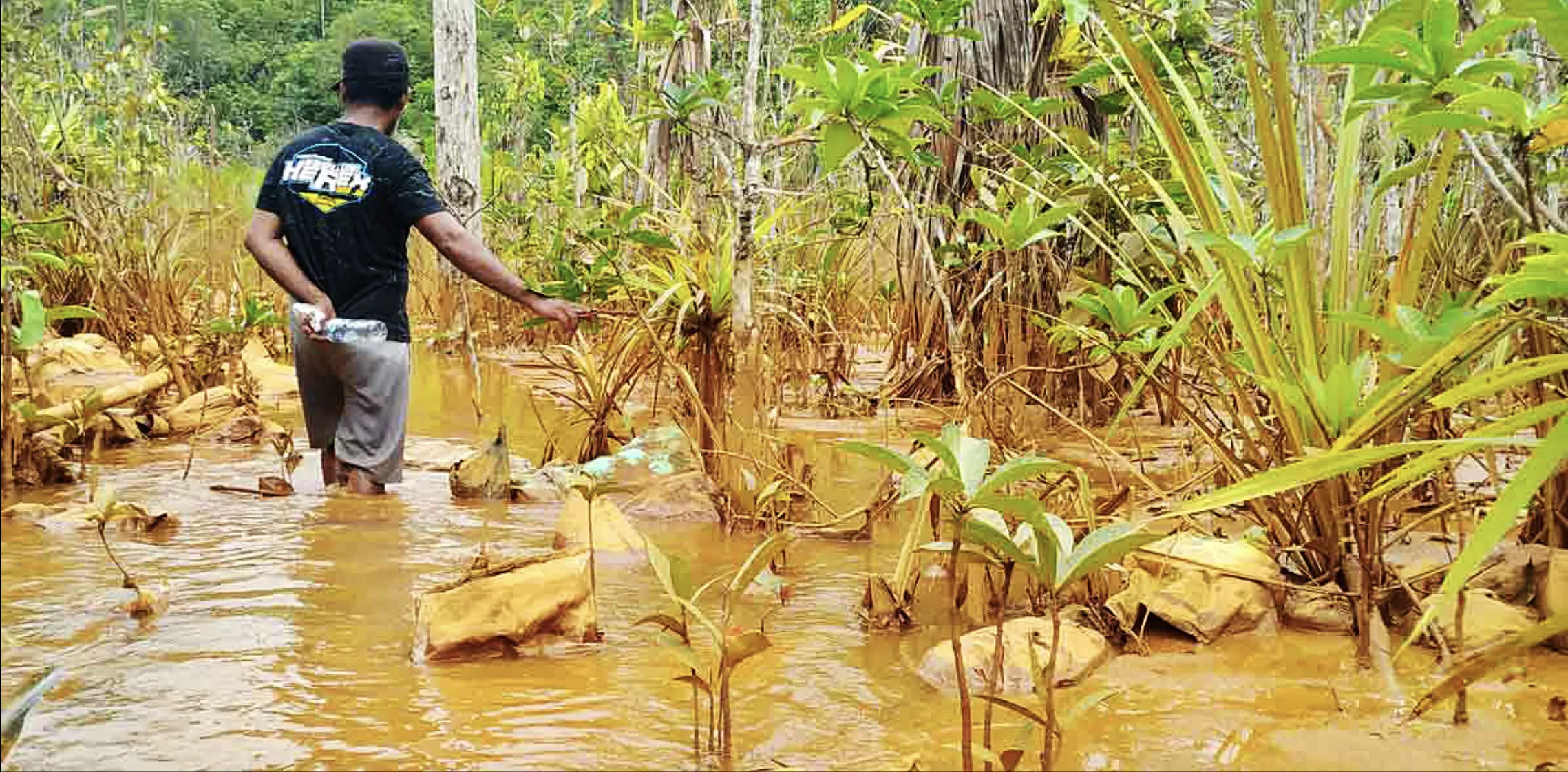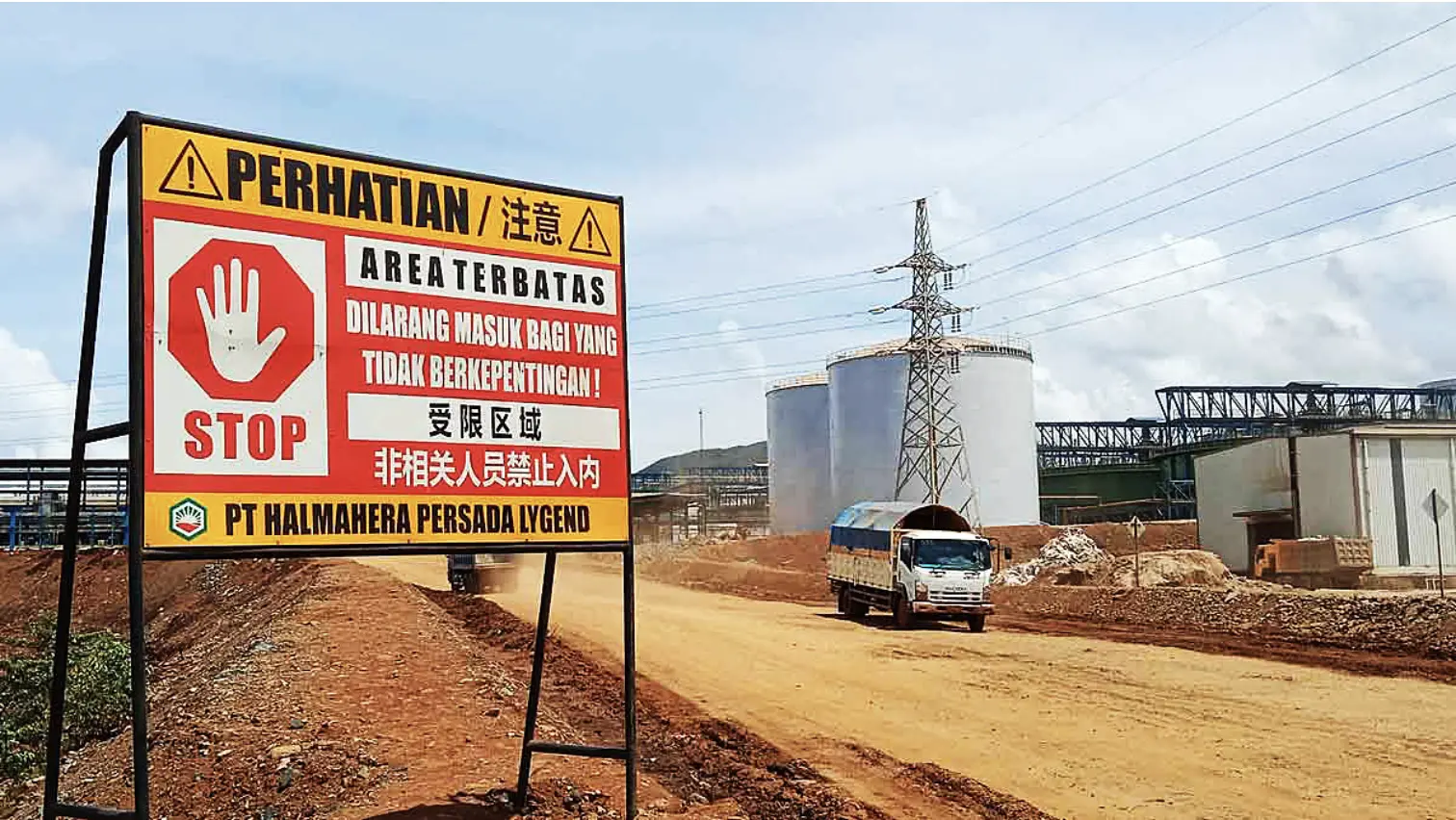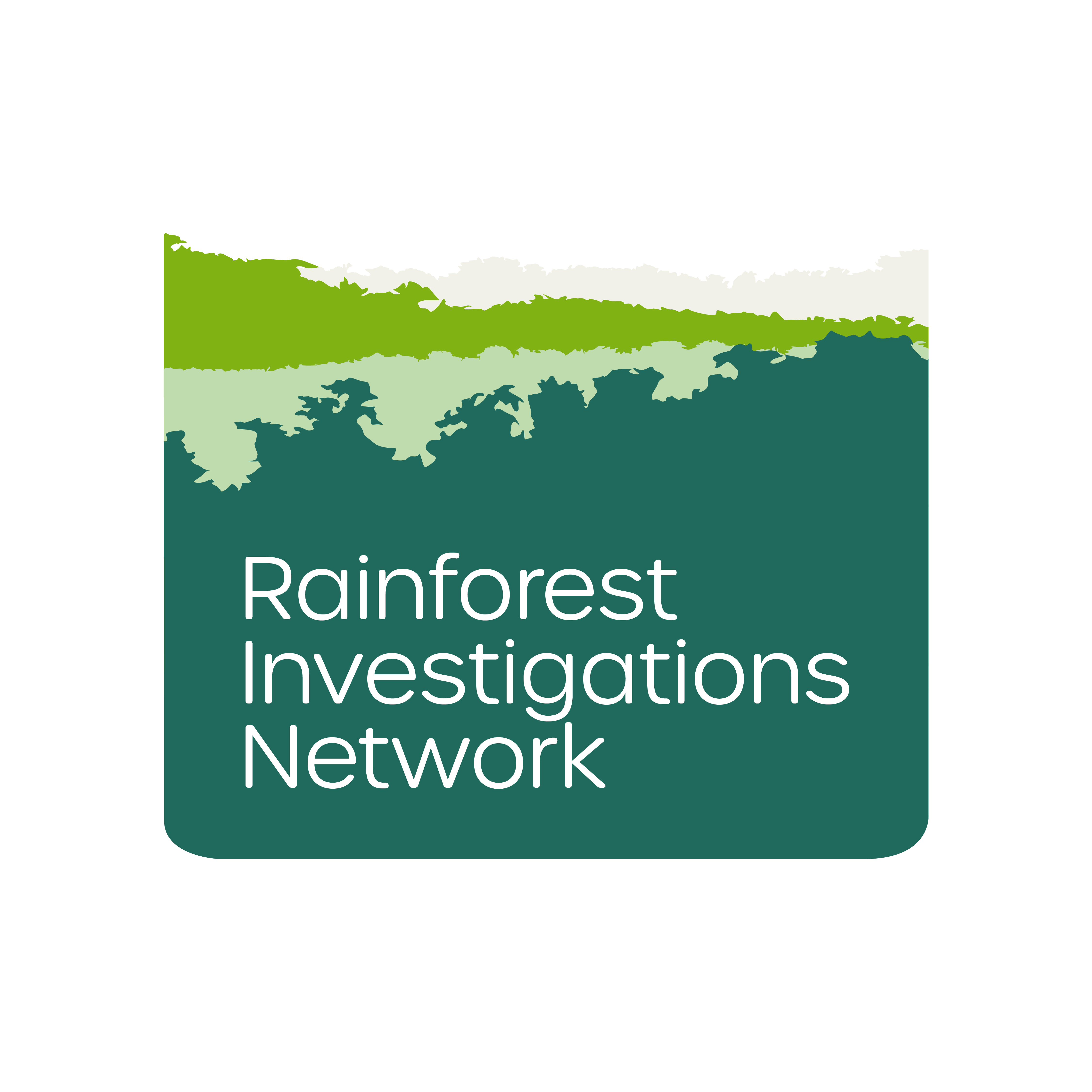
Samsudin, 48, had a frown on his face. He let out an occasional sigh as he plucked plastic waste sticking to the hull of his boat docked along the Kawasi Beach, Obi District, South Halmahera Regency, North Maluku. The fisherman from Kawasi canceled his plan to go out to sea, despite having been grounded for a week due to high waves. Coastal and water contamination is apparent in Kawasi since nickel mining began. “We can only put up with it,” Samsudin said on November 28, 2021.
And it’s just not the floating garbage. The once pristine waters have now become muddy, blackish-brown in color. Samsudin, who has been going out to sea since his teens, recalled that decades before mining activities came to Kawasi, the sea that stretched before him was always clean. He never had to venture far to catch reef fish. The situation has now changed into a nightmare for fishermen.
The mud is lethal to the coral reefs where the fish reside. Sanusi, another fisherman affected by the nickel waste, said that before mining began, they could catch between 30 to 50 kilograms of coastal fish, including red snapper and bubara (giant trevally) every time they went to sea. “This region is also a pelagic fishing zone,” he said. Pelagic refers to a group of fish living close to the water’s surface, such as tuna, skipjack, and mackerel.

Whistleblowers and others in possession of sensitive information of public concern can now securely and confidentially share tips, documents, and data with the Pulitzer Center’s Rainforest Investigations Network (RIN), its editors, and journalists.
Fishermen also catch sea cucumbers. These sea cucumbers used to inhabit the coral reefs, which were healthy up to just a couple of years ago. “But now the reef fish, the pelagic fish, and sea cucumbers are gone,” he said. Even the clusters of coral reefs spread in numerous locations are no longer, replaced by mud sediments that, according to Sanusi, continue to become ever-more thick over time.
Tempo’s observation when visiting Kawasi showed that the mud originated from the mining activities scattered all over Kawasi. The nickel mines to the east of Kawasi are open quarries. Forested hills located around 3 kilometers from Kawasi are being peeled off by heavy machinery. Tons upon tons of dirt containing nickel are dumped anywhere. When the rainy season comes, the piles of dirt wash away, becoming mud that flows to the creeks.
Mud sedimentation is also visible in the mangrove area near the Kawasi fishing village. It is also present in a waterfall spot some 500 meters to the northeast of Kawasi. This waterfall is a source of fresh water for locals in Kawasi for their daily needs.
Mining mud not only destroys the coral reefs, its heavy metal content also damages marine organisms and their internal organs. Research in 2019, by the Aquaculture Study Center of Khairun University, Ternate, entitled “The State of Water Quality and Marine Biota Health in the Waters of Obi Island, South Halmahera District, North Maluku,” discovered that at least 12 species of fish and clams suffered exposure to heavy metal pollution.
According to the head of the study center, Muhammad Aris, heavy metal content in the waters from Kawasi Village, all the way to Soligi Village in South Obi District to the south, is already higher than the maximum limit for quality standards set by the government. “Research has discovered damage to fish cells. We suspect this is due to heavy metal contamination,” said Aris, who also teaches in the Aquaculture Study Program, Faculty of Fisheries and Marine Sciences, of Khairun University, on February 5.

According to Aris’ study, heavy metal contamination is found in at least 12 species of fish and clams. The list includes those often consumed by villagers, including kima clams (Tridacna), leopard coral grouper (Plectropomus leopardus), grey snapper (Lutjanus griseus), snapper (Lutjanus sp.), and red snapper (Lutjanus campechanus). Also, bream (Lethrinidae), brown-marbled grouper (Epinephelus fuscoguttatus), indo-pacific tarpon (Megalops cyprinoides), mackerel tuna (Euthynnus affinis), yellowstripe scad (Selaroides leptolepis), northern whiting (Sillago sihama), and giant trevally (Caranx ignobilis).
Aris sent samples of fish to the Bogor Institute of Agriculture or IPB University, West Java, for laboratory testing. Upon dissection of all the types of fish, heavy tissue damage and black spots were discovered. In some fish, Aris explained, they found tissues damaged by chronic cancer or necrosis, making examination difficult. “I hope these findings will draw the attention and provide material for policymakers. There is serious (water pollution) problem in Obi,” he said.
Measuring 13.379 hectares or 133.79 square kilometers, Kawasi Village is directly adjacent to the shores of the Molucca Sea. The village, inhabited by 1,082 residents, could be referred to as the “capital” of nickel mining in Obi Islands — the largest in the Obi Islands. Seven nickel mining companies operate in the village. Three are subsidiaries of Harita Group owned by Lim Hariyanto Wijaya Sarwono.
Nickel miners began to arrive in 2008, when the South Halmahera Regent at the time, Muhammad Kasuba, issued a general investigation mining for nickel mineral authorization permit. The permit for land measuring 7,462 hectares was issued to a subsidiary of Harita Group, PT Trimegah Bangun Persada. Afterward, Harita bought two other subsidiaries: PT Halmahera Persada Lygend and PT Gane Permai Sentosa. Kawasi then became busier with the arrival of other nickel mining companies.
The largest smelter is managed by Harita Group through a partnership with a Chinese state-owned company, Xinxing Ductile Iron Pipes Co Ltd. The nickel ore processing plant run by PT Halmahera Persada Lygend utilizes high-pressure acid leaching technology claimed to have a mixed hydroxide precipitate (MHP) production capacity of 365 thousand tons per year. MHP is a derivative of nickel ore, containing 34 to 55 percent nickel and 1 to 4.5 percent cobalt, which are used in the production of electric vehicle batteries.
While the problem of mining mud sedimentation persists, residents of Kawasi now face the prospect of waste being disposed into the sea, or deep sea tailing placement. This began when North Maluku Governor Abdul Gani Kasuba issued a water region for waste disposal permit approval letter to PT Trimegah Bangun Persada on July 2, 2019.
Later, the permit was found to be in conflict with Regional Regulation Number 2 Year 2018 on the Zoning Plan for the Coastal Areas and Small Islands of North Maluku Province. The regional regulation does not recognize a waste disposal zone. On the contrary, the waters around Obi Islands are designated as a fishing zone. Fahrudin Tokoboya, Head of North Maluku Environment Agency, said that the regional administration has just approved the sea tailing location permit for PT Trimegah Bangun Persada.
However, in his view, the company continues to dispose waste on land. “We have not received the plan for waste disposal to the sea. As far as I know, the permit has not been issued,” said Fahrudin. Meanwhile, Head of South Halmahera Regional Development Planning, Research, and Development Agency, Muhammad Thamrin, explained that Kawasi will become an industrial region, including for nickel waste processing. “I do not know the specifics, but we have discussed the area planning,” he said. The presence of the tailing pipe, going from PT Trimegah Bangun Persada and ending at sea, is restricting the fishing space of fishermen. They are prohibited from entering the area where the pipe is planted. Ahmad, a Kawasi fisherman whom Tempo met while tracing the pipe, said that the pipeline is located 300 meters to the east of the village. The black pipe is visible on the shoreline.
According to Nurhayati, a woman leader in Kawasi, the company did not coordinate with locals when constructing the tailing pipe. “The people heard that the pipe would be used for waste disposal, but we were never invited to talks,” she said.
North Maluku Regional Executive Director of the Indonesian Forum for the Environment (Walhi) Ahmad Rusyadi Rasjid said the plan to dump nickel processing waste into the sea is a form of negligence of the rights of public health and comfort. The plan even tends to disregard the principles of ecological balance. “Walhi firmly opposes the plan to dump waste into the sea,” he said. PT Trimegah Bangun Persada through Corporate Communications Manager Anie Rahmi said that no production excess is dumped to the sea. She said that the company always processes and re-utilizes industrial waste. As an example, she mentioned that coal ash from coal-fired power plants is used as paving material in road construction and filler in ex-mining pits.
Meanwhile, the muddy waters of Kawasi is said to be caused not by water pollution. Anie denied that the condition is the result of the company’s activities. To her view, the situation is common in estuary areas where the soil is red. “Such as in Jakarta or the north side of Java Island. During the rainy season, the water will become muddy due to runoff water containing red soil from the land,” she said.







